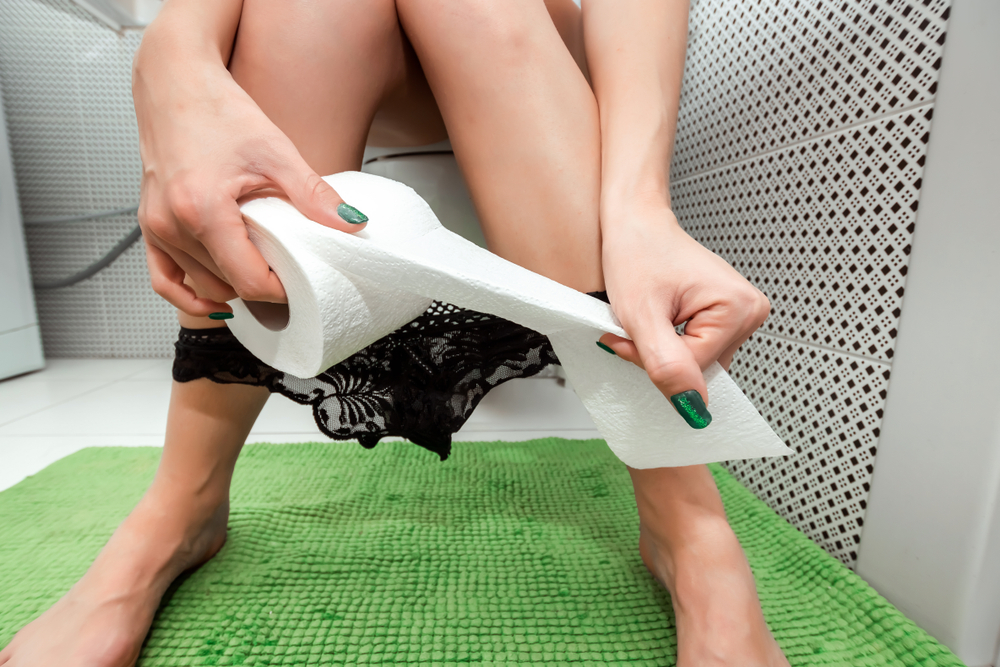There’s that old saying: “when you’ve got to go, you’ve got to go,” and it becomes more true as we age. Urinary incontinence is defined as the involuntary loss of urine that represents a hygienic or social problem to a person. Urinary Incontinence is simply the uncontrollable loss of urine and this constitutes a problem for any woman or man!!!!
Regardless of the way it is presented, urinary incontinence must be identified, properly diagnosed, and treated in order for you to achieve the relief you’re looking for. Dr. Miklos and Dr. Moore are here to provide that relief for all of their suffering patients and have a wonderfully proven track record of success.
TYPES OF URINARY INCONTINENCE
Stress Incontinence
While there are many different types of urinary incontinence, the most common include stress incontinence and urge incontinence (aka overactive bladder). Stress incontinence occurs when there is unexpected leakage of urine caused by an increase of abdominal pressure. It is most commonly described as urine loss during coughing, sneezing, laughing, heavy lifting or exercise. This condition may be due to an inherent weakness of the pelvic floor muscles or damage to these muscles from childbirth.
Urge Incontinence
Urge incontinence is also known as overactive bladder, or OAB. Urge incontinence occurs when a person feels the urge to go but is unable to hold back the urine long enough to get to a bathroom. The patient most frequently suffers from symptoms of urgency or urination, frequency of urination as well as nighttime urination aka nocturia. A patient may suffer from one or more of these symptoms.
Overflow Incontinence
Overflow incontinence occurs when a person is unable to empty their bladder completely, and it overflows as new urine is produced. This sometimes occurs in women who have had a stress urinary incontinence surgery such as a Burch or a sling procedure as well as in patients with bladder prolapse known as a cystocele. Patients suffering from overflow incontinence after a Burch or sling is most often due to overcorrection or excessive scar formation from the surgery and this creates an obstruction.
A cystocele means the vagina which supports the bladder is no longer supported and the bladder falls with the urethra staying in place and this creates a kinking effect (just like bending a water hose) or an obstruction. Overflow incontinence can also be found in patients with diabetes or spinal cord injuries.
Functional Incontinence
This type of incontinence has less to do with a bladder malfunction or disorder, and more to do with the logistics of getting to the bathroom in time. It’s usually found in elderly or disabled people who have normal or near-normal bladder control, but cannot get to the toilet in time because of mobility limitations or confusion.
URINARY INCONTINENCE TREATMENTS
Urge incontinence is best treated with medications known as anticholinergics. These medicines relax the bladder muscles in an attempt to decrease excessive bladder contractility. Patients taking these medications can still urinate but have less urge to do so when it is not warranted.
Stress incontinence can be treated both non surgically and surgically. Non-surgical treatment has been around for almost a century and are known as pelvic floor muscle exercises or Kegel exercises. This is the first line of therapy for most patients. If they do not work the patient can be sent to a physical therapist for appropriate training of Kegels. There is also surgery of which there are two main types: slings and laparoscopic Burch procedures. Slings are the most commonly performed procedure but most being performed today use a synthetic mesh known as polypropylene and often patients are afraid of using synthetic mesh.
Another alternative is the minimally invasive procedure known as the laparoscopic Burch procedure. Dr Miklos & Moore have been performing laparoscopic Burch procedures since 1993 and were some of the first surgeons in the country to do so. The laparoscopic Burch has a cure rate of 90% and 85% one and 5 years respectively after surgery. This means 90% of women having the surgery will not have cough leakage one year after surgery and on average 85% will not experience cough leakage 5 years after surgery. The results of the laparoscopic Burch are equivalent to the sling procedure in a skilled surgeon’s hands.

